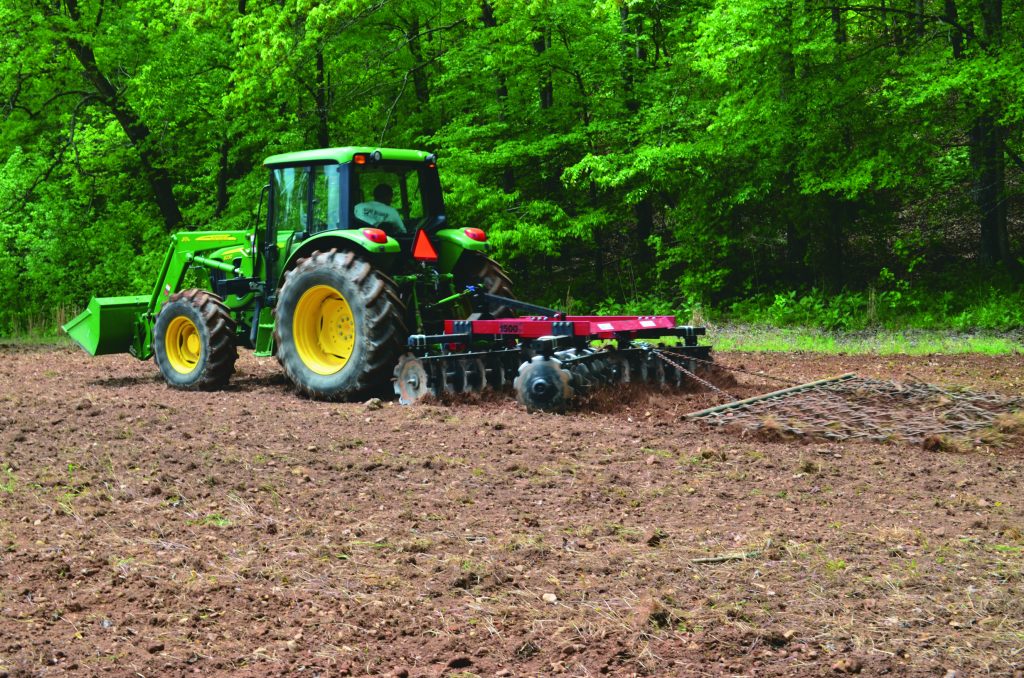Preparing the Seedbeds for the Best Results
The late summer or early fall planting season is quickly approaching. Soon, hunters will be getting ready for their club work days and preparing to plant food plots. I’m often asked to give some tips for good seedbed preparation, so here goes.
I believe one of the biggest reasons for poor seedbed preparation is trying to work the soil with too much green or overgrown vegetation. This problem is magnified when coupled with inadequate equipment.

Preparing the Bed
It is really tough to prepare a good seedbed when you are trying to disc or till under massive amounts of green vegetation. Your disc or tiller simply can’t work as well as it should with the tonnage of grass and weeds in the way.
A properly timed, nonselective herbicide application can kill the unwanted weeds and dry them down where your equipment can function much more efficiently. This saves a lot of tractors or all-terrain vehicle time and fuel.
“One of the biggest reasons for poor seed bed preparation is trying to work soil with too much green or overgrown vegetation.”
Many people who are unfamiliar with herbicides are afraid of spraying a nonselective herbicide like Roundup (glyphosate) in fear that it may affect their planting. Glyphosate is a contact-only herbicide and has no soil or residual activity. In other words, if it doesn’t touch the green tissue of a living plant, it won’t work.
This allows a person to spray very close to the planting time to help the crop get a jumpstart on any weeds. The ideal timing for mowing and spraying can take two to three weeks before planting time to really get good results, so the time to act is now. Usually, in about 10 to 14 days after spraying, the plot will be starting to dry down.
Tips for Herbicide Applications
Try these tips for good pre-planting herbicide applications.
* Read the label. The herbicide labels contain great information and they are there for a reason. Labels will identify what weeds it kills and what the recommended rate is.
* Spray when grasses or broadleaf weeds are young and thriving. If the field is tall and overgrown, the results will often be less than desirable. If weeds are already tall and mature, mow first and return a few days later to spray the new regrowth even if it is minimal.
* For optimal results, use AMS (ammonium sulfate). AMS will increase the effectiveness of the herbicide by helping the weeds readily translocate the herbicide to the roots for a good kill. AMS is especially helpful when using well water.
* Don’t skimp on water. Many times, people use the correct amount of herbicide but don’t add enough water to thoroughly spray the field. In a burndown before planting, always try to use 15 to 20 gallons of solution per acre.
* Know the size of the fields you are going to be spraying so you can apply the appropriate amount of solution. To practice and calibrate your sprayer, find a field and measure it with a GPS or use a rangefinder to determine the acreage. Fill your spray tank with just water and take note of the speed you travel and the amount of water you apply over the known area. This will eliminate guesswork and yield better spray results.
My cocktail of choice for pre-plant burn down includes the following: 1.25 quarts of 41 percent glyphosate per acre, 15 pounds of granular AMS per 100 gallons, two pints of non-ionic surfactant per 100 gallons. One pint per acre of 2,4D can be added if the area contains woody brush, heavy broadleaf weeds or areas with glyphosate-resistant weed varieties.



